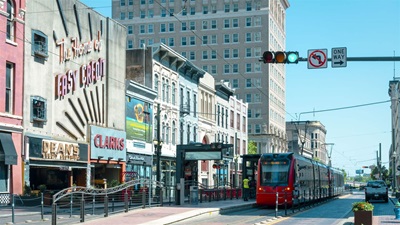The U.S. Power Grid Needs Modernizing. Distributed Energy Resources Are One Answer
Local generation can lower costs, improve reliability, and provide clean power

The U.S. energy grid is under pressure. Infrastructure is aging, and energy demand is rapidly growing from the expansion of domestic manufacturing, data centers, and electrification, all of which highlight the need to expand grid capacity. The answer is not to rely solely on traditional centralized power plants, which typically burn fossil fuels, are prone to widespread disruptions, and are increasingly expensive and slow to build.
One promising solution is distributed energy resources (DERs)—technologies such as rooftop solar, battery storage, and small-scale power grids, which can enhance the resilience of the overall grid by generating electricity nearer to the point of use. By reducing the dependence on large-scale and long-distance transmission, DERs alleviate grid congestion, improve efficiency, and can lower costs as well.
The resources collected here examine the potential for DERs to modernize the electric grid and reflect The Pew Charitable Trusts’ efforts to encourage widespread access to DERs.








